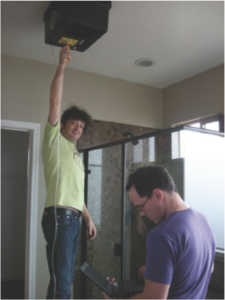Smart Ventilation System
Smart ventilation performance depends on best practices: exemplary design, installation and maintenance.
- Design should include drawings and specifications
- Installers are trained and experienced
- Installation concludes with commissioning
- Maintenance includes cleaning of filters, heat-exchangers, and grilles
Problems Researchers Find
Numerous field studies find that 50% or more of existing ventilation systems don’t perform as designed. Among the many problems that these field studies reported are the following.
- Incorrect fan sizing during design
- Insufficient professional training for installers
- Lack of continuity in the trades persons involved in the ventilation installation
- No commissioning after installation
- Lack of required maintenance for ventilation systems
- Insufficient awareness of the ventilation-system operation by occupants
Commissioning is Important to Prevent Problems

The process of testing and verifying that a ventilation system works as designed is called commissioning. HVAC contractors often neglect commissioning of the installation. Commissioning includes these steps.
- Measure total airflow into and out of the building
- Measure airflow to individual rooms
- Verify that ventilation systems work as designed with heating and cooling systems
- Ensure that building occupants understand how to control and maintain the ventilation system
- Verify that operation and maintenance documentation is readily available
Further Reading
“Formaldehyde Transfer in Residential Energy Recovery Ventilators.” Building and Environment (2014).